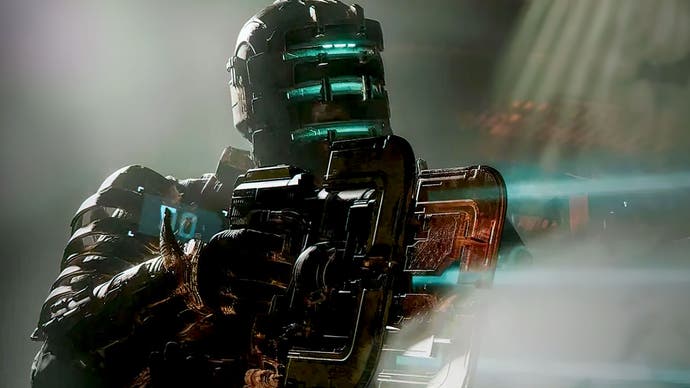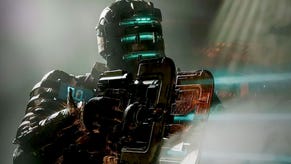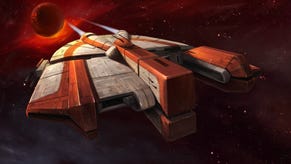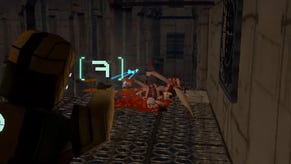Dead Space Remake PC: a premium port marred by intrusive stutter
PC vs PS5 plus optimised settings.
Like the PS5 and Xbox versions, Dead Space on PC is a brilliant game with some serious issues that unfortunately overshadow what is otherwise a high-quality remake of the 2008 classic. Here's what you need to know about these issues - plus a comparison of PC versus PS5 and optimised settings that boost performance without sacrificing visuals on a range of PC hardware.
Starting with a look at the game's menus, Dead Space is a well-appointed PC port with clearly described options and a background that shows graphical settings changes live - something every PC port should try to emulate. Weirdly though, the menus animate at 30fps, and sometimes performance is lower than expected after making changes - so a full game restart after changing a setting is recommended.
We'll cover which options are worth changing a little later, but for now let's talk shader compilation. This is handled by a precompilation step the first time you start a game, taking a bit more than a minute on a Core i9 12900K and just under three minutes on the more mainstream-orientated Ryzen 5 3600. This is normally good news, as it should help prevent instances of shader compilation stutter, but the implementation here seems flawed - reinstalling a driver and wiping the shader cache doesn't trigger this precompilation step again if you're on the same driver version, so you can run into massive shader compilation stutters this way.
Moreover, the precompilation step seems incomplete even when it does run, as I experienced what appeared to be shader compilation stutters a few times in my playthroughs on different PCs. This is a relatively rare, but still disappointing - and unfortunately it doesn't end there when it comes with frame-time spikes.
There is also streaming and traversal-related stutter, where the game exhibits frequent, repeatable and unpreventable frame-time spikes, up to 150ms or nine frames on a Core i9 12900K, when the character crosses individual boundaries on the map and new sections load in. The first time you do this in a session, the spike is bigger, but it reoccurs each time you cross the same threshold (33ms or two frames, for the example that caused a 150ms spike initially).
The impact and frequency of these spikes increase on slower PCs, with the Ryzen 5 3600 + RTX 2060 Super PC exhibiting repeated frame-time spikes of 100ms (six frames) compared to the 33ms spikes on the 12900K + RTX 3080 build. Unfortunately, there's no way to fix this as a player beyond using a hypothetical future CPU that can just brute-force it, so hopefully it is something that can be fixed in a future patch.
Now let's tackle optimised settings, summarised in the table below. In short, I recommend DLSS over FSR if available on your hardware, as FSR exhibits noticeable particle ghosting and issues with the animated UI in the game world, something not encountered with DLSS or at native resolution with TAA. Interestingly, DLSS and FSR both suffer from an incorrect texture bias setting, which can be fixed on Nvidia GPUs using Profile Inspector - see the video (9:53) for details on how to set this up as it is a little complicated.
| Optimised Settings | PS5 Performance Settings | |
|---|---|---|
| Motion Blur | User choice | n/a |
| Dynamic Resolution Scaling | On | On |
| Variable Rate Shading (VRS) | Off, unless internal res >= 4K | Off |
| Anti-Aliasing | DLSS or FSR 2 | FSR 2 Quality |
| Light Quality | Medium/Ultra* | Medium/Ultra* |
| Shadow Quality | Medium | Medium |
| Reflection Quality | High/Ultra* | High+ (custom?) |
| Volumetric Resolution | Medium | Medium/Ultra |
| Ambient Occlusion | SSAO (RTAO on RTX 2080 or above) | SSAO |
| Depth of Field | User Choice | High |
*Options look and run the same
Otherwise, I recommend skipping variable rate shading (VRS) as it hurts performance at internal resolutions (ie before upscaling) below 4K, but dynamic resolution scaling is worth turning on. It's not a magic bullet, but it can smooth out performance by dropping resolution a bit.
Other settings offer relatively little performance impact, eg lighting quality looks and runs identically among medium, high and ultra - only the low setting is different, looking worse and boosting performance by 20 percent, so I recommend medium. The shadows setting is a rare performance win, so it's worth turning to medium to boost frame-rates at minimal expense. Finally, RTAO provides more realistic shadows, but costs around 10 percent performance on an RTX 2060 Super, so I recommend keeping it on for RTX 2080 class hardware or above; otherwise disable it.
You can see the table above or the video for more detail on other settings, but dynamic resolution and DLSS/FSR provide the vast majority of performance gains here so we'll leave it there for now.
Beyond optimised settings, I did spot an issue with PC performance, where sometimes the game flushes several gigabytes of data into video memory, which corresponds with a massive frame-rate drop for an extended period. I experienced this on an RTX 3080 with 10GB of VRAM and an output resolution of 4K, but not on the 8GB RTX 2060 Super with an output resolution of 1440p. The issue didn't occur every time, but if you do experience it consider disabling RTAO if enabled, or dropping your output resolution to free video memory.
On an unrelated note, it's possible to manually enable Resizeable BAR on Nvidia graphics cards to boost performance by a small amount - around one to four percent in our testing - using the Nvidia Profile Inspector tool, see the video (21:06) for more details.
So that's it for Dead Space on PC - I like the game but it's clear that the PC version could use fixes in specific areas. Traversal stutter is the biggest issue at present, as it's intrusive to gameplay and atmosphere, and seems to manifest more intensely on PC than on consoles. Hopefully this, and the other less pressing issues, can be fixed in a future patch to bring this release to a good place.










-_-First-Person-Mod-_-Official-Release-6-6-screenshot.png?width=291&height=164&fit=crop&quality=80&format=jpg&auto=webp)







